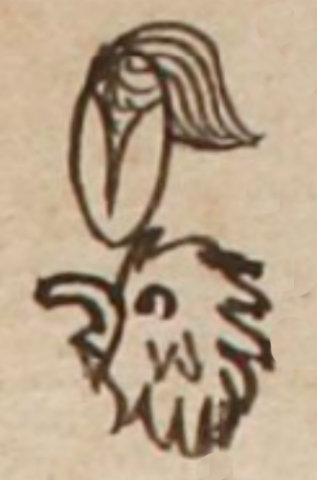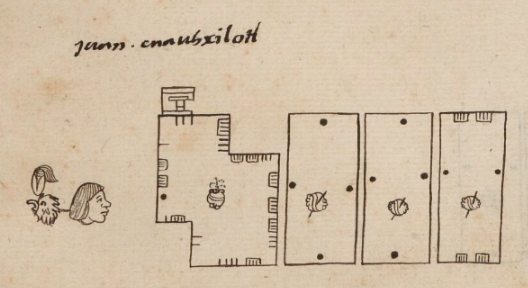Cuauhxilotl (Verg7r)
This black-line drawing of the compound glyph for the personal name Cuauhxilotl (referring to a tropical tree with edible fruit and attested here as a man’s name) shows the head of an eagle (cuauhtli) in profile, looking toward the viewer's left. The feathers on the eagle's neck and the back of its head are spiky. Above the eagle's head is an ear of corn (xilotl) in a frontal view. The cob is largely wrapped in its husk, with some kernels visible, and some silk shown coming off the top and curving toward the right.
Stephanie Wood
This fully phonographic compound elicits the word cuauhxilotl, the tropical tree with edible fruit that gives the principal meaning for the name.
Stephanie Wood
juan.cuauhxilotl
Juan Cuauhxilotl
Stephanie Wood
1539
Jeff Haskett-Wood
maize, maíz, eagles, águilas, feathers, plumas, nombres do hombres

cuauhxilo(tl), a tropical tree with edible fruit, https://nahuatl.wired-humanities.org/content/cuauhxilotl
cuauh(tli), eagle, https://nahuatl.wired-humanities.org/content/cuauhtli
xilo(tl), small, tender ear of green maize, before it solidifies, https://nahuatl.wired-humanities.org/content/xilotl
Cuajilote
Stephanie Wood
Codex Vergara, folio 7r, https://gallica.bnf.fr/ark:/12148/btv1b84528032/f21.item
The non-commercial reuse of images from the Bibliothèque nationale de France is free as long as the user is in compliance with the legislation in force and provides the citation: “Source gallica.bnf.fr / Bibliothèque nationale de France” or “Source gallica.bnf.fr / BnF.” We would also appreciate a citation to the Visual Lexicon of Aztec Hieroglyphs, https://aztecglyphs.wired-humanities.org/.





